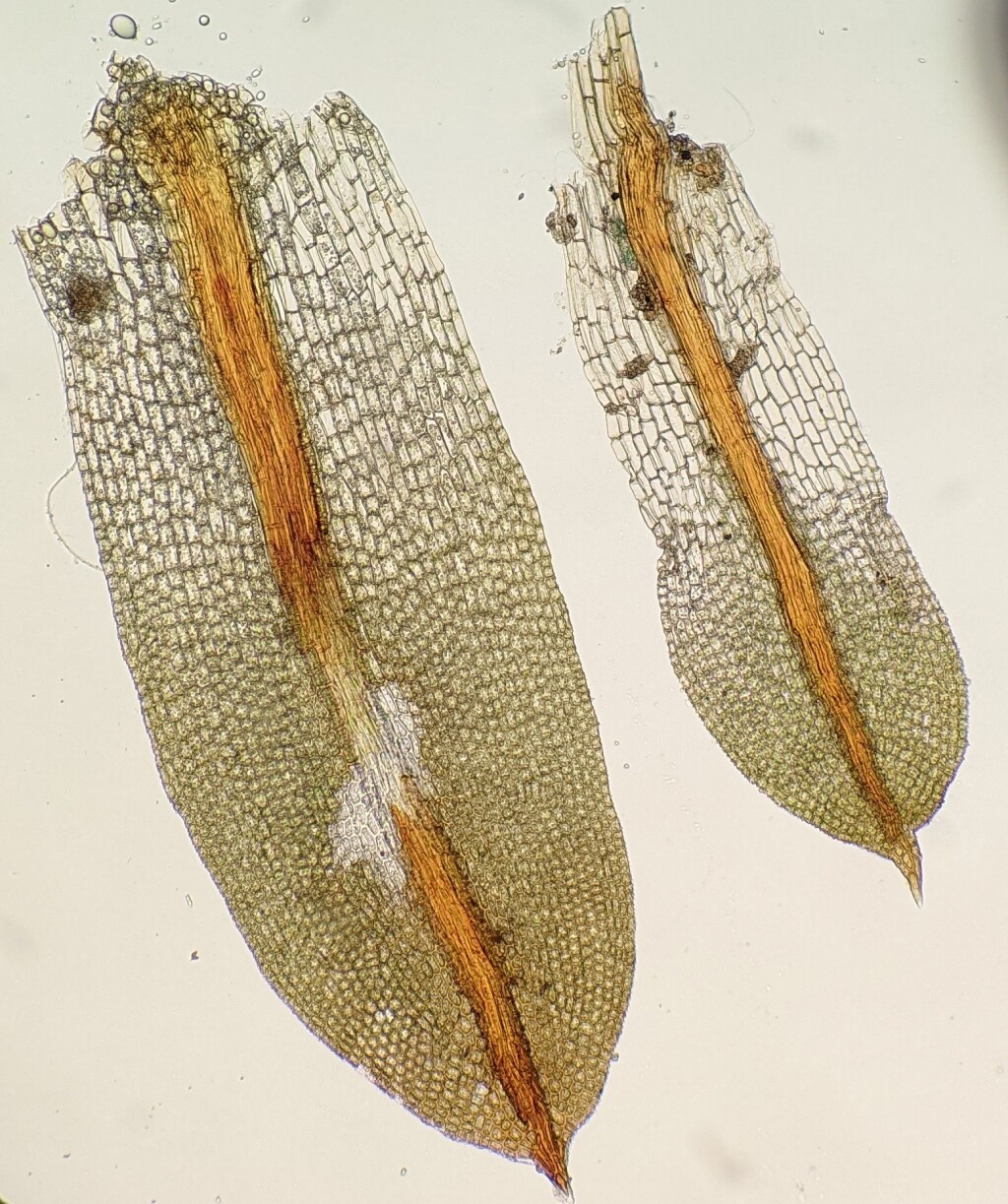Phascopsis rubicunda
I.G.StoneDioicous. Asexual reproduction by modified deciduous leaves borne at stem apex and rhizoidal gemmae. Plants branching repetitively up to 6 mm tall. Stems to 1.5 mm long, fleshy, with colourless or pale reddish brown rhizoids near base, without a central strand. Leaves narrowly or broadly elliptic, obovate or spathulate, 0.5–1.5 mm long, 0.25–0.5 mm wide, increasing in size toward stem apices, toward apices erect or erecto-patent and generally slightly incurved when moist, near base spreading to patent when moist, more concave-keeled with costa prominent dorsally, more incurved and scarcely twisted when dry, flat to concave; apices obtuse or acute, sometimes rounded; costae strong, subpercurrent to percurrent in lowest leaves, excurrent in cusp or straight, reflexed or bent arista in upper leaves; margins entire, plane to erect or slightly incurved, especially on one side near base, sometimes slightly undulate, without a border; laminal cells in apical half quadrate, rounded-hexagonal or shortly oblong, 10–15 μm wide, pluripapillose; cells in basal half 25–40 μm long, c. 15 μm wide, decreasing in papillosity toward base where smooth. Perichaetial leaves oblong-lanceolate, to 2 mm long, concave. Setae 0.05–0.2 mm long; vaginula 0.45–0.5 mm long. Capsules immersed, erect, subglobose or broadly ellipsoid, straight, c. 0.6 mm diameter, dark red, gymnostomous.
MuM, Wim, MuF, Gold. In the north-west of the state, mostly beside saline lakes and swamps, but occasionally beside on bare soil in anthropogenic habitats. Also WA, SA and Tas.
 Spinning
Spinning

